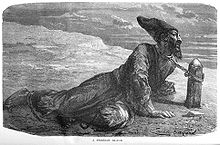| Part of a series on |
| Forced labour and slavery |
|---|
 |






Khivan slave trade refers to the slave trade in the Khanate of Khiva, which was a major center of slave trade in Central Asia from the 17th century until the annexation of Russian conquest of Khiva in 1873. The slave market in Khiva mainly trafficked slaves from Russia and Persia to the Islamic khanates in Central Asia, but also to India and the Middle East.
Khiva was one of the main slave markets in Central Asia. In Bukhara, Samarkand, Karakul, Karshi, and Charju, mainly Persians, Russians, and some Kalmyk slaves, were traded by Turkmens, Kazakhs, and Kyrgyz.[1] From the 17th to 19th centuries, Khiva was a notorious slave market for captured Persian and Russian slaves.[2]
- ^ Adle, Chahryar (2005-01-01). History of Civilizations of Central Asia: Towards the contemporary period : from the mid-nineteenth to the end of the twentieth century. UNESCO. ISBN 978-92-3-103985-0.
- ^ "Adventure in the East". Time. 6 April 1959. Archived from the original on March 7, 2008. Retrieved 4 December 2011.
